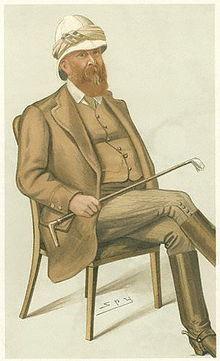A History of The Chino


SJC’s Summer ’19 is in full-swing and with each week bringing new garments that excite and delight, the SJC community is proving every day that classic style is alive and well. Here at SJC, we invite men to become leisurely gentlemen by offering a garment for every sartorial challenge, so not only are you equipped for special occasions, but for the everyday.
There is one garment which, besides the Deco Polo, will equip you with a staple that can be worn with any ensemble, on any occasion, all year round. From practical necessity in the Punjabi hillsides of British India, to the gleaming east coast campuses of Ivy-style America, the chino has proved a worldwide classic.

For Summer ’19, the SJC chino is back. Available in two styles, the wide-cut Ellington and the narrow-cut Astor come in 5 wonderful colours. But how does a garment born of a specific purpose or era become a timeless staple? Why is the chino such a classic? To discover the answer, we need to take a look back at the history of the chino.
Colonial Origins
Like many garments that have found themselves in the wardrobe of the leisurely gentlemen, the stylistic influences of the chino are rooted in the military.

With the expansion of European colonial empires during the 19th century came the development of military doctrine requiring innovations in firearms, technology and of course, apparel. It was in the heat of the Indian sub-continent that Sir Harry Lumsden first created a concoction of coffee, curry and mulberries to dye garments a dusty, mud-like colour named ‘khaki’ in the local Hindi.

Sir Harry Lumsden enjoying a sit down
The benefit of a military uniform that could blend into the local Peshawar landscape was self-evident and, in 1848, all uniforms in his regiment was outfitted in khaki dyed uniforms, with all regimental forces in India following suit shortly after.

Khaki trousers worn with puttees
For decades, forces stationed in Britain’s colonial empire wore khaki dyed chinos whereas soldiers of other European empires retained ornate, Napoleonic regalia and colours. Following British success in the Second Boer War, the Conservatives achieved a remarkable victory in the election of 1900 and this lead to the coining of the term ‘khaki election’, referring to the distinct uniform worn by the British.

French officers during the Franco-Prussian War, 1870
The first use of the term ‘chino’ emerged during the Spanish American War of 1898 by the Spanish, naming their trousers after the county said to have invented the robust cotton twill used to manufacture chinos, China. The chinos worn by the Spanish military, cash-strapped and unprepared for war with the US, also conformed to the emerging sartorial trend of a form-fitting leg as to save cloth. It’s from here that the beginnings of the modern chino can be traced.

Spanish soldiers wearing chinos during the Spanish-American War, 1898
Ivy Style
Following the Second World War, returning American soldiers brought back with them the style of regularly wearing cotton twill trousers. Many affluent young men who attended the cadre of prestigious Ivy League universities on America’s east coast favoured chinos as an alternative to tailored trousers. Often worn in a plethora of colours, this bold, youthful new style served as the platform for these young men to display their confidence and personality.

Now, in the era of mass-produced, fast-fashion, it is hard to find durable and dependable cotton-twill trousers that are sufficiently elegant to be worn by those aspiring to classic style.
The SJC chino
Hard to find, yes. Impossible? Not anymore. The SJC chino for Summer ‘19 is born of a love of the Golden Age of classic menswear and is the ultimate companion for this summer and beyond. What we have sought to capture is a canonical garment that captures, in transcendental communion with its notable predecessors, the heritage of the chino at its finest moments. Both new styles of SJC chino highlight two examples that are particularly worthy.
Part of SJC’s core collection, LONDON, The Astor and the Ellington are two styles to suit different occasions. The Astor, conforming to a early-Edwardian, narrow-hem cut, is for both the more conservatively inclined and those looking for an earlier style. Featuring a deep, single pleat, it offers subtle sartorial statement and partners perfectly with tailored garments such as our Margate Jacket or Riviera Blazer.

The Ellington, laced with confidence, is an Oxford bag-style behemoth. Featuring deep double pleats and a large, jetted button-flap coin pocket, the Ellington provides the wearer with affirmation of self that is hitherto unavailable to those aspiring to true leisure. Also partnering well with tailoring, the Ellington is the king of leisurewear, offering unrivalled style and comfort for those long summer afternoons, guaranteeing enjoyment of the time we all value most.

If classic style is not just for the odd occasion but how to enjoy those limited, leisurely moments each and every day, then there is no better way to make the most of them, than by reaching for a pair of SJC chinos.